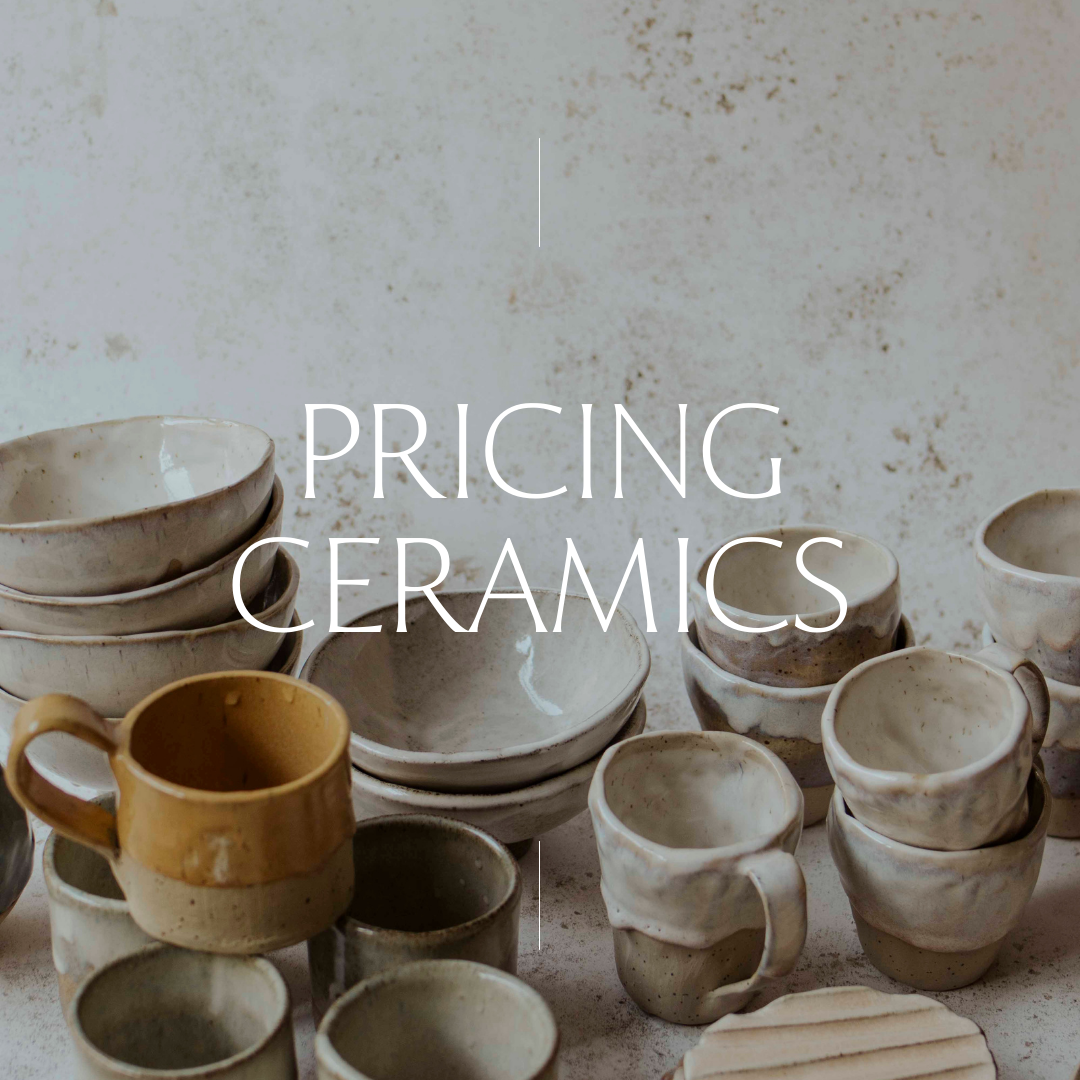
I often get asked about pricing and how to price ceramics and other handmade work. Let me first start by saying that I by no means have all the answers and, most importantly, I do not know your circumstances.
What follows is merely an attempt at dispelling a few myths and to some extent explain how I price my work.
Myths about pricing and handmade work
1. Art/handmade is not something you can live on
This one makes me particularly salty because it is a harmful myth that directly impacts people's perception of what artists deserve. So let's dispel the first myth here and now: artists are professionals and do a job and as such, need to be remunerated properly. They need to be remunerated properly not merely to survive but to make a good living and to thrive, to live a good life the way they imagined it. Art is valuable, it makes the world a better place. And even if you do not believe that for some mysterious reason, it is still a job, a service, and we are in a habit of paying our rent/mortgage/groceries with money. So we need money to pay things.
Whether or not an art or handmade business thrives financially is determined by many factors, but let's just all get rid of the idea that artists need to starve.
2. If I were to charge the amount of time it actually takes me to make (insert work here), nobody would pay for it.
I will use the example of a mug here, but this can be applied to various objects and art forms.
The mistake we tend to make, and that I myself have made a lot in the past, is to ask myself "how much would I pay for it?". This only tends to make us devalue our work.
A mug takes a certain amount of time to make: I need to cut the clay, prep the clay, form the clay, wait a certain amount of time for the clay to be dry enough, connect the slab, spend a bunch of time cleaning up the shape, wait a bit longer and then attach a handle. The next day I would clean up the shape and refine the rim. Once the mug is fired I need to clean it and glaze it. The glazes I use have been developed by me, which means that it took a long time to get to the final result: I have spent hours looking at formulas, mixing batches and evaluating them. I have invested in my education on glaze chemistry so I could do this well and responsibly.
If I where to disregard all of the above and just go with my gut, I would probably pay myself nothing and I would not even cover my costs. Where would that leave me? Unable to make a living from my work.
A few pointers on pricing ceramics
Set your goals
Are you trying to make a living off your work? Or are you just looking to finance a hobby? The answer to this question will determine your approach.
While this is a personal decision, and will vary according to your situation, I do think most of us underprice ourselves and unfortunately, low prices set wrong expectations and fail to convey the value of our craft.
Not winging it
- It's always a bad idea to price your work by asking yourself "how much would I pay for it?". It is a sure way to undervalue yourself.
- Use tangible criteria (see future slide)
- Wholesale price is not the same as retail price. If you price yourself too low in retail price, you will not be able to access the wholesale market
Costs that need to be covered
- Overhead costs (firing, rent)
- Materials
- YOUR SALARY per hour (YES!)
- Insurances (some are voluntary, some are not)
- Recurring costs (software, accounting, etsy/shopify fees, etc)
- Time spent doing admin, including photographing, listing online, measuring, packing, etc
Another way to approach it
- Look at your costs (firing costs, rent, material costs, education costs, subscriptions, etc)
- What you need to earn to sustain your life right now (mortgage / rent, living expenses, things on top)
- Calculate how much you would need to make and sell (assuming you will not sell out immediately) to get to your goal
Just to make sure it's clear: it's NOT about surviving. It's about making a living and not burning out because you are making 300 mugs and not earning enough to go on vacation...
I look at:
- How long it takes me to make the piece. This is the most expensive part of it. Your salary should be decent, not "starving artist"-level.
- How many fit in a firing and how much the firing costs
- Time it takes me to photograph, list online, pack (I pay myself a little less per hour for admin work)
- Other specific costs such as testing of glazes
- Add fees for listing etc
- Divide up the price of recurring costs and ensure it's peppered in your work so it's covered
- Material costs, including shipping materials
- Factor in taxes
Do not undervalue your work.
This means paying yourself a wage, and a living wage at that.
Think about how much you produce and how your process looks: are you able to make hundreds of products in little time or are you working in small batches of unique pieces? These differences count!
Prices are not static
You should raise your price from time to time:
- To cover inflation
- To cover for increasing costs
- To cover or account for investments you've made in your craft, specifically education. My earlier work had lower prices, also because my skills are not where they are now. I don't know why this is a tabu in our field, but it's important to account for how you've grown and what you bring to the field that is uniquely you.
I often find myself doubting my direction, but then I remember that if I were to sell out by selling mugs for 20Euros a piece, I would probably burn out in a few years or be unable to actually afford my life and would have to go back to another job.
